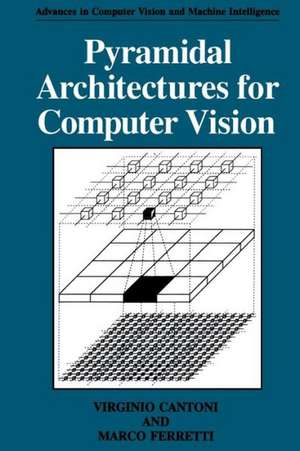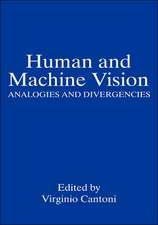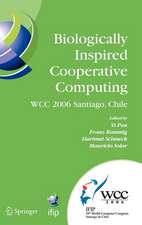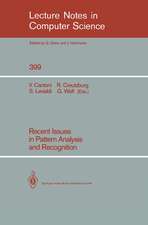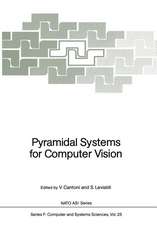Pyramidal Architectures for Computer Vision: Advances in Computer Vision and Machine Intelligence
Autor Virginio Cantoni, Marco Ferrettien Limba Engleză Paperback – 23 oct 2012
Preț: 332.07 lei
Preț vechi: 415.10 lei
-20% Nou
Puncte Express: 498
Preț estimativ în valută:
63.60€ • 65.52$ • 53.28£
63.60€ • 65.52$ • 53.28£
Carte tipărită la comandă
Livrare economică 25 februarie-11 martie
Preluare comenzi: 021 569.72.76
Specificații
ISBN-13: 9781461360230
ISBN-10: 1461360234
Pagini: 356
Ilustrații: XVII, 335 p.
Dimensiuni: 152 x 229 x 19 mm
Greutate: 0.48 kg
Ediția:Softcover reprint of the original 1st ed. 1994
Editura: Springer Us
Colecția Springer
Seria Advances in Computer Vision and Machine Intelligence
Locul publicării:New York, NY, United States
ISBN-10: 1461360234
Pagini: 356
Ilustrații: XVII, 335 p.
Dimensiuni: 152 x 229 x 19 mm
Greutate: 0.48 kg
Ediția:Softcover reprint of the original 1st ed. 1994
Editura: Springer Us
Colecția Springer
Seria Advances in Computer Vision and Machine Intelligence
Locul publicării:New York, NY, United States
Public țintă
ResearchCuprins
1. Hierarchical Architectures.- 1.1. Introduction.- 1.2. Theory of Hierarchical Modular Systems.- 1.3. Self-Organizing Hierarchical Modular Systems.- 1.4. Hierarchical Architectures for Parallel Processing Machines.- References.- 2. Hierarchical Strategies in Computer Vision Systems.- 2.1. Introduction.- 2.2. Allocation of Attention in Computer Vision Systems.- 2.3. Multiresolution Matching.- 2.4. Fine-to-Coarse Feature Generation.- 2.5. Coarse-to-Fine Searches.- 2.6. Image Flow Diagrams.- 2.7. General Planning Strategies.- References.- 3. Hierarchical Homogeneous Topologies.- 3.1. Introduction.- 3.2. Hierarchical Paradigm.- 3.3. Comparison Parameters and Evaluation Criteria.- 3.4. Bus-Oriented Architectures.- 3.5. Link-Oriented Architectures.- 3.6. Performance Measures.- 3.7. Applicability.- 3.8. Conclusions.- References.- 4. A Taxonomy of Hierarchical Machines for Computer Vision.- 4.1. Paradigm for Computer Vision.- 4.2. Taxonomy of Hierarchical Machines.- 4.3. Conclusions.- References.- 5. Compact and Distributed Pyramids.- 5.1. Introduction.- 5.2. Compact Pyramids.- 5.3. Distributed Pyramids.- 5.4. Conclusions.- References.- 6. Pipeline Multiresolution Systems.- 6.1. Introduction.- 6.2. Pyramid Vision Machine System.- 6.3. PIPE System.- 6.4. Conclusions.- References.- 7. Simulation of Pyramids on Flat Arrays and Hypercubes.- 7.1. Introduction.- 7.2. Pyramids and Meshes.- 7.3. Pyramids and Hypercubes.- 7.4. Conclusions.- References.- 8. Heterogeneous Hierarchical Systems.- 8.1. Introduction.- 8.2. Warwick Pyramid System.- 8.3. Image Understanding Architecture.- 8.4. The PASM.- 8.5. Array/Net Project.- 8.6. Conclusions.- References.- 9. Programming a Hierarchical Structure.- 9.1. Languages: An Introduction.- 9.2. Control Environment.- 9.3. Conclusions.- References.-10. Pyramidal Tools and Applications.- 10.1. Introduction.- 10.2. Complexity of Some Basic Algorithms.- 10.3. Special Pyramids.- 10.4. Pyramidal Techniques.- 10.5. Conclusions.- References.
